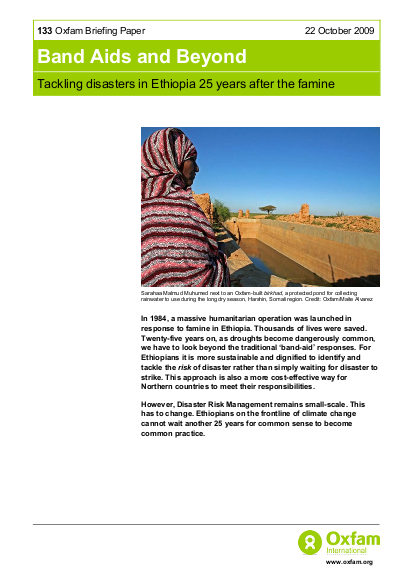133 Oxfam Briefing Paper

Seventy per cent of humanitarian aid to Ethiopia comes from the USA. Most of this is ‘in-kind’ food aid, subject to conditions which have nothing to do with development and mean that it costs up to $2 of US taxpayers’ money to deliver $1 of food aid. This begs a second question: are there any more cost-effective ways of dealing with disasters? The Disaster Risk Management (DRM) approach goes a long way to answering both these questions. DRM means the government, non-government organisations (NGOs), and the UN working in partnership with communities to identify what the threats are, such as drought or flood; to analyse how vulnerable a community or country is to them; and to decide how best to reduce the risks posed by these events, before they happen. DRM is not a new concept, but worldwide it remains an under-used idea: just 0.14 per cent of overseas assistance is allocated specifically to tackling disaster risk. Nor is DRM the whole answer: without longer-term development of livelihoods, for instance through improvements in natural resource management and farming practices, Ethiopians will still be vulnerable to shocks such as drought; and in the meantime emergency aid will still be required.